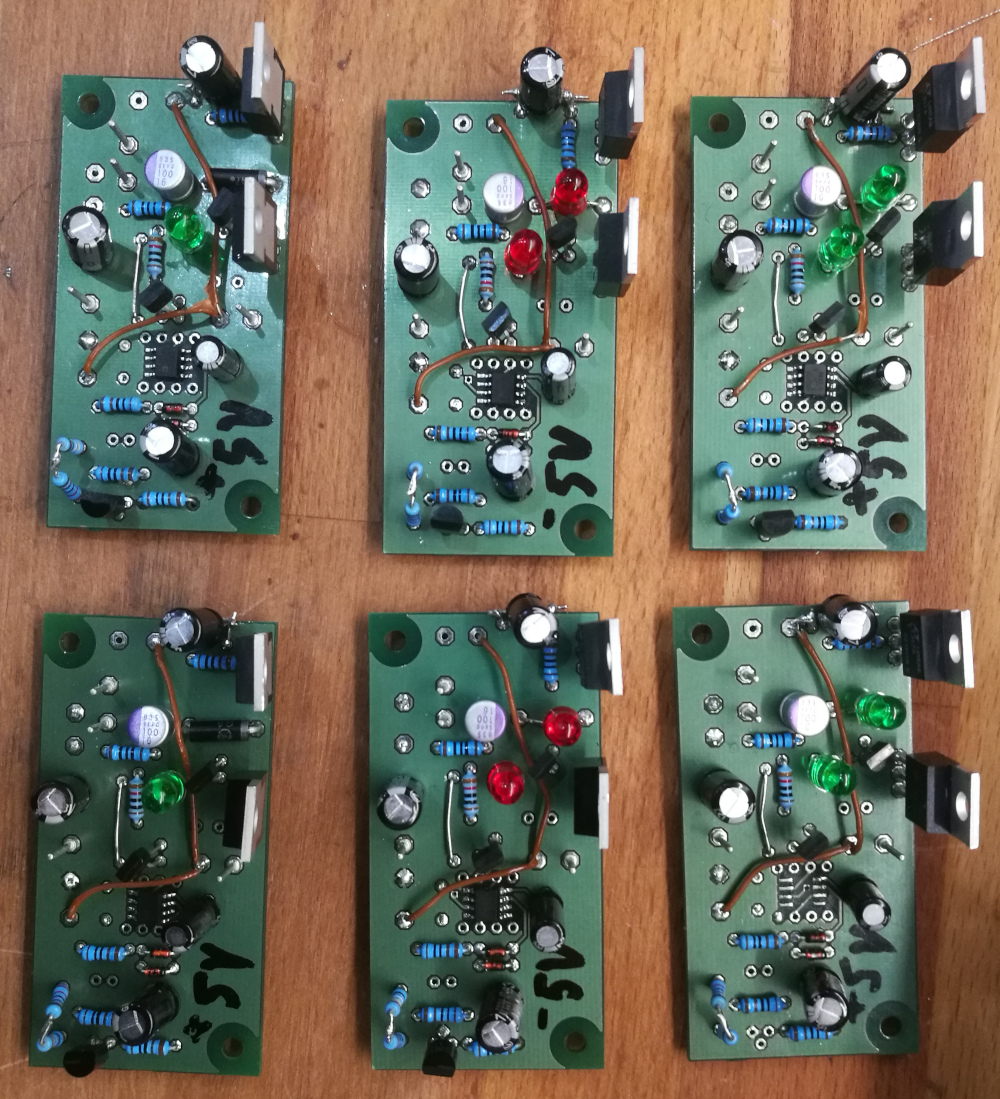I am
extremely frustrated: I can't get my ALWSRs to work properly. Half of my boads are flickering, see this video:
I swapped lot's of components as documentation is very unclear about resistor values and other basic information (BOM says different than stuffing guide / manual / schematics etc.)
Here are the boards I built so far:
The boards with red LEDs are -5V versions, the ones with green LEDs are +5V, two of the latter have zener in place of the upper LED. The ones with 1N5333B output 4.33V instead of 5V. I replaced LM336-2.5, resistors, pre-regs, nothing helped. Even worse: 2 boards I destroyed by just replacing R7: and I couldn't get them back to work after changing back to original state. Soldering bridges etc. etc. tested countless times. It took me 2 full days of troubleshooting without result. Following information found at various places I used Pana NHG caps (22u for decoupling the opamp, the rest are 47u); MRS25 resistors, AD817 as opamp. Underside of PCB: wire links configured for local sensing. Tested with and without load. The scope doesn't show oscillation.
Other "minor" problems:
- the +5V versions output 5.1~5.2V, often at startup the voltage is even 0.2V higher and settles after 30sec
- the +5V versions with zener in place of the upper LED output 4.33V instead of 5V
- the -5V versions output -4.85 to -4.95V
- desoldering destroys platet through holes
- ground plane is prone to shorting to solderings
- hole distance is so narrow that components get a lot of heat during soldering
- stuffing guide unusable but no silk screen
- online manual nice but impossible to download / print / archive
- etc. etc. etc. etc.!!!!!!!!!!!
I spent quite some money for the 10 boards and the parts for them because I trusted the reputation of the ALWS regulators. But now
I have to strongly warn against them: the boards have serious flaws, any attempt to repair them will destroy them almost certainly (in my case 100% failure rate: only the unchanged boards work stable but output wrong voltages), component values are guesswork. Even studiying all threads on diyaudio and PFM plus various versions of the so called "documentation" including the version at Acoustica will
not get you there.
Big disappointment, really.


